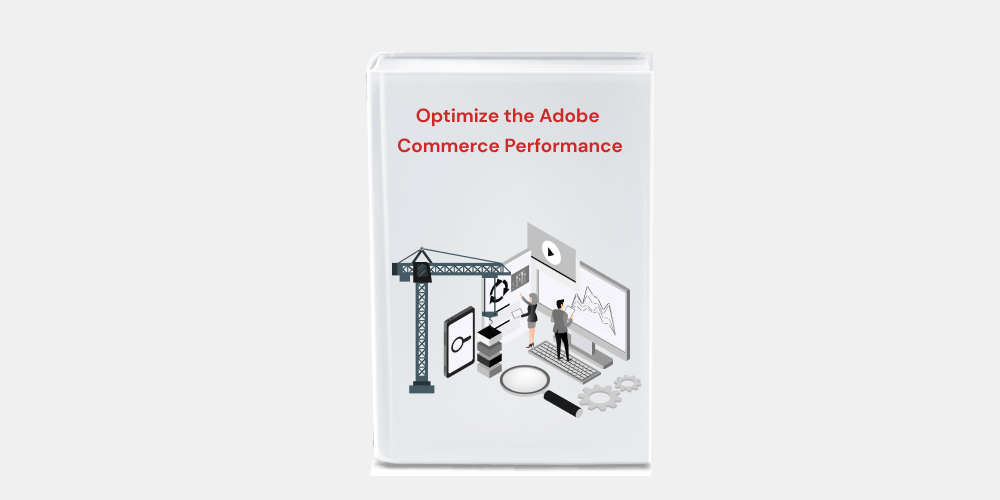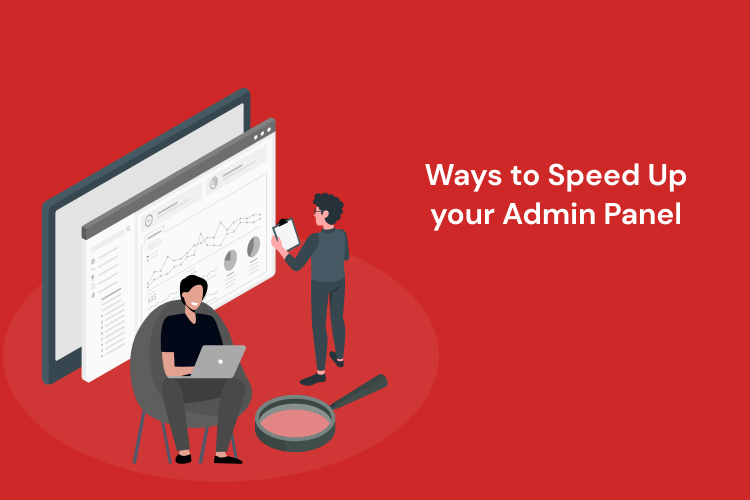
How to get a Grade Score in GTmetrix for Magento 2 Store?
According to Google, “Page speed is a crucial ranking element for any eCommerce store”. This means that if your store’s mobile and desktop page speeds are slow, it will have a negative impact on your search engine rating.
A slow website is also a turn-off for customers. Customers abandon slow websites in favor of speedy ones. Customers don’t have the patience to wait on a website for more than 3 seconds. Slow websites are avoided at all costs, and people choose to purchase the same items from another website. As a result, if your eCommerce store’s page speed is low, then your long-term revenue will suffer.
But, as the saying goes, “Every Problem has a solution,” so don’t worry if your web page performance is slow; we’re here to help. Viha Digital Commerce or Email Us at info@vihadigitalcommerce.com.
GTmetrix – what is it and how does it work?
GTmetrix is a statistics tool developed by GT.NET that aids in the monitoring of Ecommerce Store Speed and Performance. Apart from analyzing your Magento 2 store performance, this analytical tool will present you with a list of practical recommendations to improve it.
Objectives:
The main objectives of the GTmetrix tool are as follows
- Determine the causes of sluggish page loading:
When it comes to analyzing your website’s speed and performance, GTmetrix is a great tool. It will also help you to locate the issues on your website and provides recommendations to improve the overall performance of your Magento 2 Store.
Page speed and User Experience have already been integrated into Google’s ranking algorithm. Your search engine rankings will improve as your Magento store performance and user experience improves thanks to GTmetrix.
- Branding:
The GTmetrix tool can help you to enhance brand loyalty among your customers by improving your search engine rankings and improving the performance of your online eCommerce business.
- Increasing your store’s revenues:
The user experience has a direct impact on your store’s revenue. GTmetrix will provide recommendations to assist you in providing a better user experience to your visitors, resulting in an increase in your eCommerce store’s conversion ratio.
How does the GTmetrix tool differ from other tools?
- You can set up an alert and get notified when your website underperforms.
- You can check out how your website performs in 22 different global test locations.
- You can check out how your website performs on different devices.
What is GTmetrix Grade?
The GTmetrix score is the weighted average of the two new percentages, namely:
- Performance Score (70%)
- Structure Score (30%)
The GTmetrix Score assigns 70/30 weights for performance and structure scores respectively.
Performance Score: The Performance score of the website is calculated considering 6 key metrics with the following weights:

Loading performance (55%)
First Contentful Paint (15%):
A performance indicator called First Contentful Paint (FCP) monitors how quickly visitors can view the actual content (text, photos, video, etc.) on your site. A low FCP can provide a better user experience to the visitors of your website.
Speed Index (15%):
How fast your page appears above the fold is determined by the Speed Index (SI). It is calculated by analyzing the frame-by-frame loading behavior of your website’s pages
Largest Contentful Paint (25%):
LCP evaluates the time taken by the largest “Content Element” of your website page to become visible to your visitors. The largest content includes the heading text, hero images, etc.
Interactivity (40%)
Time to Interactive (15%):
The Time to Interactive (TTI) metric determines when a page is reliably ready for user interaction after the First Contentful Paint (FCP). A quick TTI can help to identify situations where your website’s page appears to be interactive.
Total Blocking Time (25%):
TBT measures the total time between First Contentful Paint (FCP) and Time to Interactive where the main thread was blocked for long enough to prevent input responsiveness
Visual Stability (5%)
Cumulative Layout Shift (5%):
CLS is a metric that tracks the unexpected shifting of your web elements while the page is produced. All the individual layout shifts on your page are added together to create an aggregate score.
Each metric of performance score is measured and calculated as a score and then compared to the threshold, and the cumulative score (weighted appropriately) is the final performance grade.
Color coding in the performance Tab:
Depending upon the performance of the diverse metrics, color coding and messages appear on the screen.

Structure Score:
A page’s Structure Score tells you how well it’s designed to perform at its highest level. When using GTmetrix’s “Structure” feature, you can see which issues are affecting your site’s performance. When it comes to optimizing your web page, this page is valuable because it offers you practical information like “remove render-blocking resources” and “Minify CSS.”

How to measure the speed score for Magento 2 Store at GTmetrix?
GTmetrix is free and it is quite simple and easy to use.
To Measure your Magento2 store performance, you need to https://gtmetrix.com/

After visiting the GTmetrix website, the above page will appear on your screen. You just need to enter the URL of your website and click on Test your site to get a score for your Magento Store. Here we have analyzed the results for the Amazon store, which is integrated into the Magento platform.

Your Magento 2 store Results will appear on the screen
With the help of the above analysis, you will be able to track pages, view your website’s speed performance history over time, annotate regions of interest in your chart, and set alerts depending on page speed, page load time, and total page size, among other things.
How to get an A grade in GTmetrix for Magento 2 Store:?
A popular tool for optimizing your website, GTmetrix generates extensive reports
regarding your website’s performance. It analyses the page’s performance based on Google Page Speed and Yslow Score. There is a calculation for
the average score for both standards, and you are ranked accordingly (A, B, C…). The Magento platform is
comparatively slow if it is not optimized efficiently. As GTmetrix is the most accurate tool for measuring the
speed and performance of your website, every Magento store merchant strives to improve their Grade score. Using
the following tips and tactics, you can achieve an A grade on GTmetrix.
Image Optimization: Your Website’s page load time increases. There are ways to make your website load faster
without sacrificing image quality by compressing
the photos on your website. As a result, your photographs will be lower in file size,
resulting in a faster page load time for your website.
Enabling Content Delivery Network: CDN stands for Content Delivery Network,
which is a distributed system of servers used in multiple data centers across the internet. In addition to
improving page-load time, it reduces download time by bringing the content closer to the end-users. One of the
most effective ways to improve your Magento store speed is to reduce page
loading time. A content delivery network (CDN) is one of the best ways to speed up your website, as it can save
up to 60% of bandwidth and reduce the number of requests made by your website.
Minifying CSS and JS files: Minifying CSS and JS files will aid in the
optimization of your Magento store’s speed and performance. It will assist you in reducing the size of JSS and
CSS files so that they can be easily loaded on the webpage. “All JavaScript exceeding 4096 bytes can be
minimized without causing any issues at the user’s end,” according to Google.
Follow these steps to enable JavaScript minification:
(i) Magento should be in production mode
(ii) Select Stores > Configuration > Advanced >
Developer from the drop-down menu.
(iii) Click yes for Minifying Javascript Files.
(iv) Save the Configuration
(v) At the System > Cache Management page, flush the cache.
Enabling Compression:
Compression is a fundamental method for conserving bandwidth and increasing the speed of your website. If the size of your website’s web pages is greater than 100kb, it will result in a slow page speed for your website. Files should be compressed using compression methods and “zipped” to reduce load time. You can compress documents in Gzip format before sending them for download using a third-party module or built-in routines. This can cut download times by up to 70%.
Monitoring Your Store Performance:
It is critical to keep track of the performance of your website. Before updating any
code or content on your site, you can run a quick test to see how it performs. When considering how to improve
the execution of your website, it is also critical to establish a benchmark. It will assist you in effectively
monitoring your website’s performance.
The above tips and tricks will undoubtedly aid you in increasing your Magento 2
store grade at GTmetrix. Hire a Dedicated Magento Developer and get a Free Trial For 8 Hours.
Please contact us at Viha Digital Commerce or Email Us at info@vihadigitalcommerce.com for expert Magento speed
optimization assistance.
Thank you.









